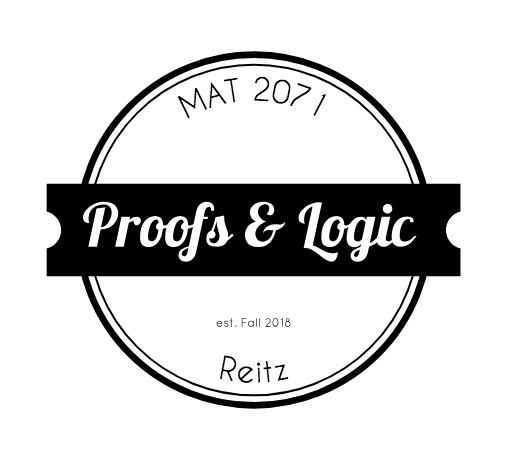Tag: 1
Handy Links
 Logic on Math StackExchange
Logic on Math StackExchange
- Confusion about claim on truth functions (Elliot Mendelson, Introduction to Mathematical Logic) November 8, 2024A truth function of $n$-arguments is defined to be a function of $n$- arguments, the arguments and values of which are the truth values T or F. As we have seen, any statement form containing n distinct statement letters determines a corresponding truth function of n arguments. He then futher elaborates, To be precise, enumerate […]Francis Augustus
- How do I find the number of triplets $(x,y,z) \in (\mathbb{N}^{*})^3$ satisfying the given equation? [closed] November 8, 2024Find $(x,y,z) \in (\mathbb{N}^{*})^3$ such that $\frac{x}{x+1} + \frac{y}{y+1} + \frac{z}{z+1}=2$. I find some triplets like $(2,2,2)$, $(3,3,1)$,$(3,1,3)$,$(1,3,3)$, there are other triplets?Abdelali
- Natural Numbers under Sum Constraints November 8, 2024PROBLEM: Each natural number is coloured blue or red, so if $x$ and $y$ are painted the same colour, then $x+y$ is painted blue (note that it could be $x=y$). Determine all the ways to colour the natural numbers that follow this rule. MY WORK: I thought about what happens if I choose a particular […]Alejandro Lorite
- How do I prove and explain this logical statement using a semantic tree? November 8, 2024Logical statement: $F:$ if $(\neg R)$ then $(\neg P \iff (R \land P))$. I've tried doing it but it seems I am missing a node somewhere, does anyone know where? I am stuck so any help would be appreciated. My Semantic Tree:Reddblue
- Elementary question on recursion theorem November 7, 2024I’m experiencing some confusion regarding definition by recursion, as it’s stated in the attachment below: In particular, if $\left(J,R\right)$ is unambiguous, why is it essential for the function $\operatorname{g_{Q}}$ to be $\left(r + 1\right)$-ary ?. I’d think we can simply define $\operatorname{f}\left(x\right)$ to be $\operatorname{g_{Q}}\left(x\right)$ [rather than $\operatorname{g_Q}\left(x,o_{1}, \ldots,o_{r}\right)$] when $\left(a_{1},\ldots,a_{r}\right)$ are in Q [because […]Cyrus
- How to generically restrict the domain of an axiom? November 7, 2024I need to figure out an elegant and mathematically precise way to restrict the domain of a collection of axioms. Let $N$ and $A$ be arbitrary finite sets, let $\mathcal{P}(A)=\bigl\{P\mid P=(P_i)_{i\in N}:P_i\text{ is a linear order over }A\bigr\}$ be the set of all linear order profiles on $A$, let $F=\{f\mid f:\mathcal{P}(A)\to A\}$ be the set […]EoDmnFOr3q
- Reference Requests: Books or Papers for the Area of Topological Logical Geometrization November 7, 2024Having recently finished reading Topology via Logic, I am captivated by the interplay between logic and topology and eager to explore this field further. I am particularly drawn to what some might refer to as "topological logical geometricization," which, to my understanding, develops analogous methods for addressing problems in differential and algebraic geometry. However, I've […]RanWang
- Help with Recursive Function for Counting Binary Expressions in Logic Assignment November 6, 2024I'm working on a problem for a logic course, and I could really use some help with defining a recursive function. The task is to define countbinexprs, a function that, given a Boolean expression, returns the number of occurrences of binary sub-expressions. The Boolean expressions follow this grammar: BExpr ::= bool | (BExpr ∧ BExpr) […]asfasfasf
- What does {aaa, aab, baa}* equal to? November 6, 2024The answer should be formulated as a property of the lengths of consecutive blocks of identical letters. So, it can't be given using some algorithm or recursive methods. Verification of belonging to the language must be a linear condition. I can easily describe some properties of such words. But how do I come up with […]простой человек
- Let A, B, and C be sets. Show/prove (Not with venn diagram) that (A-B)-C = (A-C) - (B-C) [closed] November 5, 2024I tried to prove this by using logical equivalencies. I attached the picture of my proof. In my proof I stated that (A-B)-C is equal to A and NOT (A and (B or C)) and (A-C) - (B-C) is also equal to A and NOT (A and C) and NOT (B and (B OR C)) […]Samet Cimen




Recent Comments